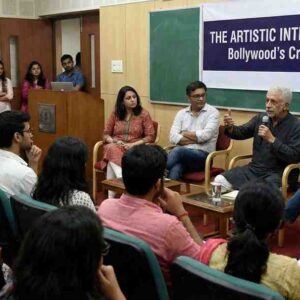Key Points:
-
Key Metrics
• Number of Actor-Led Production Houses Founded (2020–2025): Over 30 (Source: Film Federation of India) • Share of Hindi Films Backed by Actor-Producers in 2024: 34% (Source: Producers Guild of India) • Top Actor-Producers: Alia Bhatt (Eternal Sunshine), Ayushmann Khurrana (Chandrikaa Motion Pictures), Anushka Sharma (Clean Slate Filmz, until 2022), Shah Rukh Khan (Red Chillies Entertainment), and John Abraham (JA Entertainment) • Combined Box Office Earnings of Actor-Produced Films (2024): ₹1,570 crore (Source: BoxOfficeIndia.com) • Share of OTT Debuts by Actor-Producers: 41% of their content went directly to streaming platforms (Source: Ormax Media)
Key Metrics:
• Number of Actor-Led Production Houses Founded (2020–2025): Over 30 (Source: Film Federation of India)
• Share of Hindi Films Backed by Actor-Producers in 2024: 34% (Source: Producers Guild of India)
• Top Actor-Producers: Alia Bhatt (Eternal Sunshine), Ayushmann Khurrana (Chandrikaa Motion Pictures), Anushka Sharma (Clean Slate Filmz, until 2022), Shah Rukh Khan (Red Chillies Entertainment), and John Abraham (JA Entertainment)
• Combined Box Office Earnings of Actor-Produced Films (2024): ₹1,570 crore (Source: BoxOfficeIndia.com)
• Share of OTT Debuts by Actor-Producers: 41% of their content went directly to streaming platforms (Source: Ormax Media)
From Performers to Powerhouses
The last five years in Bollywood have seen a shift in power dynamics as actors increasingly step behind the camera to take charge of the storytelling process. Traditionally reliant on large studios, many stars are now producing their own films, giving them greater control over narratives, budgets, and distribution.
This movement is not merely about diversifying income. It reflects a deeper industry transformation where actors leverage their personal brand equity, industry influence, and audience trust to shape the kind of cinema they believe in—both commercially and thematically.
Shaping Stories on Their Own Terms
The decision to turn producer is often motivated by creative freedom. Alia Bhatt’sEternal Sunshine Productions, launched in 2021, backedDarlings(2022), which tackled domestic abuse through black comedy—an unlikely choice for mainstream studios.
Similarly, Ayushmann Khurrana launchedChandrikaa Motion Picturesto promote socially relevant content. His 2024 productionEk Hissa Zindagi Ka, focusing on neurodivergence, was not only critically acclaimed but also sold for ₹62 crore in digital rights to a major OTT platform.
Actor-producers are selecting scripts that are genre-defying, risk-taking, and far removed from the star-led formula films of previous decades.
Financial Independence and Revenue Diversification
With actors turning producers, financial control has also shifted. Many actor-led companies handle co-production, international rights sales, OTT negotiations, and marketing in-house. This ensures better revenue splits and ownership of intellectual property.
According to the Producers Guild of India, films backed by actor-producers in 2024 earned an average ROI of 2.8x—higher than studio-only ventures, partly due to leaner production models and direct audience engagement via social media.
Shah Rukh Khan’sRed Chillies Entertainment, for instance, not only produces feature films but also manages post-production, VFX, and content for other creators—expanding revenue streams beyond acting.
Driving the OTT and Festival Circuit
Actor-led films are increasingly opting for OTT-first or hybrid release models. Anushka Sharma’sBulbbulandQala(before she exited Clean Slate Filmz) set a precedent for quality-first streaming releases. OTT platforms, in turn, actively seek such content to anchor their Indian catalogues.
Moreover, actor-producers are targeting film festivals to build global reputation. Films backed by Indian actors like Rajkummar Rao and Vidya Balan have screened at Toronto, Berlin, and Busan, helping rebrand Indian cinema internationally.
Challenges and Industry Reactions
Despite success, actor-producers face challenges ranging from creative burnout to financial risk exposure. Smaller producers have voiced concerns about the monopolistic tendencies of stars who control both production and acting roles.
To address concerns, the Indian Film & TV Producers Council has discussed guidelines ensuring fair hiring practices and budget transparency when actors serve dual roles as lead cast and producers.
Conclusion: The Rise of the Creative Entrepreneur
Actors turning producers in Bollywood marks a fundamental power shift—one where storytelling autonomy, financial control, and strategic vision converge. By shaping content from the inside out, these creative entrepreneurs are not just redefining their careers but reshaping the future of Hindi cinema.
As more actors take this route, the film industry is likely to become more democratic, narrative-driven, and responsive to the evolving tastes of audiences both in India and globally.












